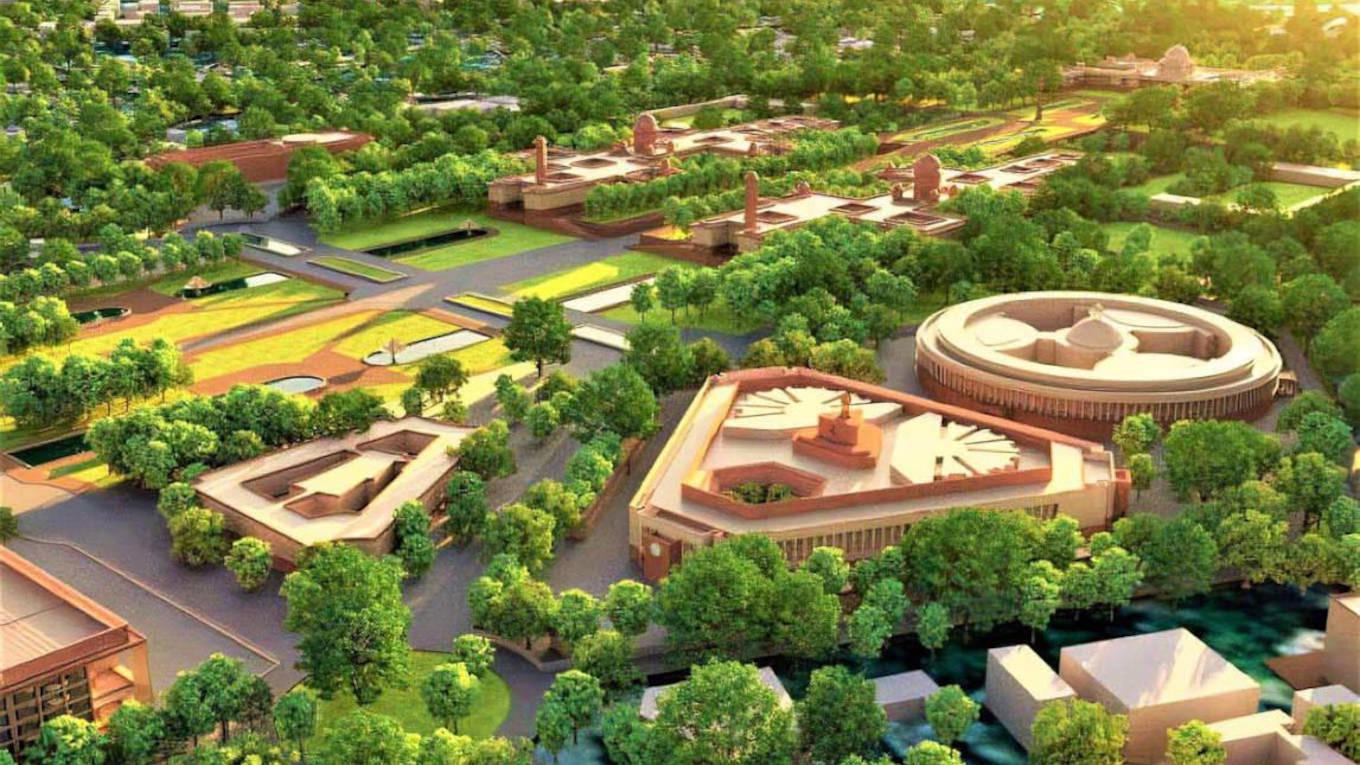-
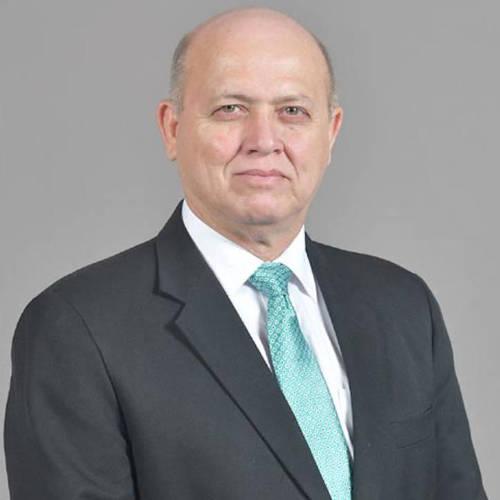
Deshpande: pursuing our strategy for growth
He envisions the contract for the new Parliament – a triangular structure to be built close to the existing circular one – as an opportunity for TPL to serve the country by executing a prestigious nationally important project. “We have started work on the project, which is complex, but are confident of delivering the iconic building within the tight timeframe of 21 months,” he mentions. “This is much more than a contract, as the project is motivating and inspirational, and evokes national pride and a sense of duty and dedication in me and my team.” Tata Projects has about 5,000 employees, with an average age of 35.
Some of the more noteworthy projects the company has executed in recent times are India’s largest blast furnace, for National Mineral Development Corporation, in Chhattisgarh; Rourkela Steel Plant’s Blast Furnace-5 ‘Durga’; a 320 km stretch of the Western Dedicated Freight Corridor; Sri Damodaram Sanjeevaiah Thermal Power Station (3x800 MW) in Andhra Pradesh; Dravyavati River Rejuvenation Project in Jaipur; and sections of the Delhi, Lucknow and Mumbai metro rail systems.
Projects in progress include a segment of India’s longest sea-bridge, Mumbai’s Trans-Harbour Link, in a joint venture with South Korea’s Daewoo E&C, redevelopment of the BDD (Bombay Development Department) chawl in south-central Mumbai, in a consortium with Mumbai’s Capacit’e Infraprojects and China’s CITIC Group, and the Trisonic Wind Tunnel at ISRO’s Vikram Sarabhai Space Centre in Kerala, on turnkey basis and in a tie-up with Canada’s Aiolos Engineering Corporation for knowhow and technology.
Contract is a boon for the company
The Parliament building contract comes as a boon for TPL, which its last annual report acknowledges is in deep financial stress, as most other Indian corporates, on account of the Covid-induced lockdown. The building will form part of the government’s ambitious Rs20,000 crore Central Vista Redevelopment Project.
This project has been widely perceived as a vanity one that is unneeded and profligate, especially at a time the country has slid into a recessionary phase with its economy collapsed by 23.9 per cent. The Delhi Development Authority lost no time in approving change in land use so as to fast track the project, which includes construction of 10 new government office buildings that will replace existing ones that have been earmarked for demolition.
The imposing and symmetrical South and North Blocks will become museums, the former currently housing the Prime Minister’s Office, and the ministries of Defence and External Affairs, while the latter has offices of the Home and Finance ministries.
The Prime Minister will be shifting out of his official residence at 7, Lok Kalyan Marg to a grander setting – a new palatial house and principal workplace for himself – as part of his personal initiative to redesign the present majestic Parliament Vista. To justify the need for the new Parliament building, the authorities have assessed the present colonnaded Parliament House, or Sansad Bhavan, as dilapidated and seismically and structurally unstable, and yet have planned its conversion into a public museum.
This monumental structure is one of the world’s most magnificent legislatures, designed by British architects Sir Edwin Lutyens and Sir Herbert Baker in 1912-13 as part of their wider mandate to create a new capital precinct for British India. There is an unconfirmed belief that the 174-metre diameter rotunda was inspired by the 11th century Chausath Yogini temple in Madhya Pradesh’s Morena district, its circumference embedded by 64 chambers.
-
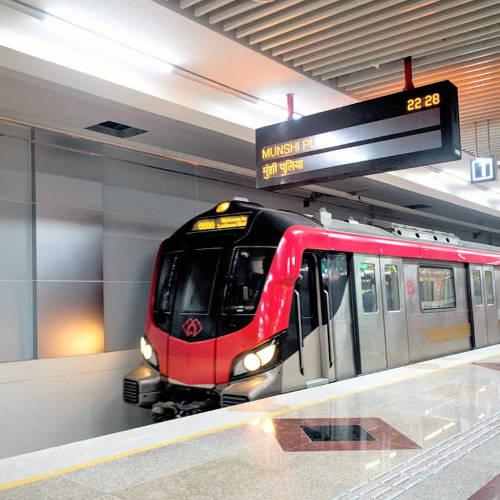
Going underground: Lucknow Metro Phase 1A
Tata Projects will be working along the overall design prepared by Ahmedabad-based HCP Design, Planning and Management Pvt. Ltd that has been the architectural and engineering planner of the Central Vista project. Founded by Hasmukh C. Patel in 1960, HCP has been the architecture firm favoured by Narendra Modi since he was the chief minister of Gujarat. HCP had given shape to Modi’s concept of Swarnim Sankul in 2011, an office complex flanking the Central Vista of the legislative assembly building in Gandhinagar that will find reflection in New Delhi’s Central Vista project.
Patel’s 58-year-old son Bimal Patel is director at HCP and had executed Modi’s other dream project, the 11.25 km Sabarmati Riverfront Development Project, which became the centre-piece of Modi’s Gujarat Model when he was chief minister.
On the new Parliament building, Bimal Patel notes: “What we do with our Parliament building will powerfully signify who we are, how we view our past and where we see ourselves going.” HCP was also marshalled by Modi for constructing the Kashi Vishwanath Corridor in his Parliamentary constituency of Varanasi, a revamp of the eastern seafront of the Mumbai Port Trust, and restoration of Ahmedabad’s 32-acre Sabarmati Ashram.
Tata Projects’ Chief Strategy Officer Himanshu Chaturvedi notes that his company will deploy the most sophisticated methods for the Parliament construction, like 3D modelling, which is a computer graphics technique for producing three-dimensional digital representation of any object or surface, and Lean Construction (LC) that aims at reducing costs, materials, time and effort to essentially “minimise the bad and maximise the good”. “These techniques will enable us to do everything in this project in a ‘First Time Right’ way,” remarks Chaturvedi.
According to him, TPL also uses building information modelling systems, IoT (Internet of Things) based online and remote project monitoring systems for tracking progress, as well Last Planner System to deliver projects on time. “Building, design and construction have three aspects, namely, civil construction, Mechanical, Electrical and Plumbing (MEP) and Heating, Ventilation and Air-Conditioning (HVAC), and architectural work and finishes, he explains.
Several Tata firms in infrastructure
While TPL will undertake all civil, mechanical and electrical construction for the Parliament building, technology elements like smart lighting, acoustics, HVAC and security systems need to be sourced from suppliers approved by its client and nodal agency for the project, the Central Public Works Department (CPWD). Similarly, the architectural finishes are also state-of-the-art and will need to be obtained from specialised companies.
Tata Projects and L&T are again among 43 prospective bidders for the redevelopment of the Central Railways’ Chhatrapati Shivaji Maharaj Terminus (CSMT), a UNESCO World Heritage site that has served rail commuters and passengers in Mumbai since 1888. The Rs1,642 crore make-over is to be completed within four years of the award of the tender.
Significantly, TPL has not been the contractor of choice for the Tata Group itself, which has a multiplicity of infrastructure and engineering companies within its fold. Historically, the 153-year-old Tata Group had largely favoured the 155-year-old engineering and construction giant, the Shapoorji Pallonji (SP) Group, the Mistry family that owns the SP Group, having been the largest shareholders – with 18.4 per cent shares – in Tata Sons and having had good relations with the Tata family.
-
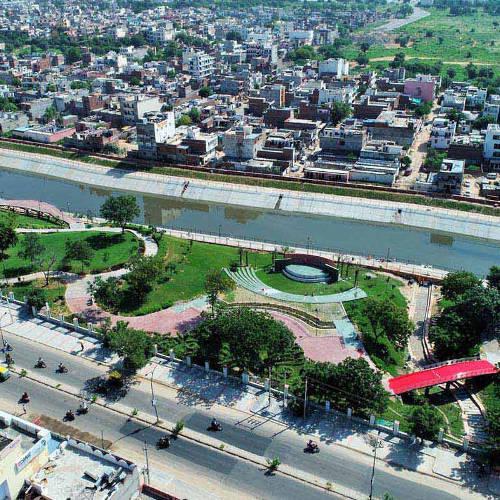
Landscape park: Dravyavati River Rejuvenation Project, Jaipur
The two groups, however, fell apart following the ouster in 2016 of SP Group’s Cyrus Mistry as charman of the Tata Group. The SP Group recently stated, “It is with a heavy heart that the Mistry family believes that a separation of interests would best serve all stakeholder groups”, bringing the time-tested relationship to a bitter end.
The SP Group is now also contesting the award of the Parliament building contract to TPL, communicating to the CPWD about what it charged was the Tata company’s ‘serious misconduct’ during the bidding process. In 2016 too, an SP Group company, Afcons Infrastructure Ltd, had won a case against a joint venture of TPL and China’s Guangdong Yuantian Engineering Co. (GYT) for a metro rail project in Nagpur. Nagpur Metro had rejected TPL-GYT’s bid for not meeting the technical eligibility requirement. Subsequently, Afcons emerged as the lowest bidder, but the Bombay High Court dismissed Nagpur Metro’s decision, prompting Afcons to approach the Supreme Court, which upheld its appeal.
The Tata Group headquarters, the four-storey colonial structure called Bombay House, had been designed 96 years ago by Scottish architect George Wittet who designed over 40 buildings for the group that led to his appointment as head of Tata Engineering Co, now Tata Motors.
In 1962, the Tatas incorporated Tata Consulting Engineers Ltd (TCE) as an integrated engineering consultant. However, like TPL, TCE too provides concept to commissioning services in infrastructure, mining and metallurgy, hydrocarbons and chemicals, and in thermal, hydro, nuclear and renewable power, as well as transmission and distribution.
Another Tata company, Voltas Ltd, set up in 1954 as a pioneer in air-conditioning and cooling technologies, also had a mining and construction equipment division (M&CE) from the outset. Voltas M&CE was amongst India’s first engineering product and service companies to introduce earthmoving and infrastructure machinery post-Independence.
There were reports a year ago of the Tatas’ considering a merger of Voltas’ project business, Voltas Projects, with Tata Projects to improve operating efficiencies across verticals and cut costs, with Voltas being re-categorised under the consumer vertical. Voltas Projects’ business involved turnkey projects in the domestic and international MEP market. More than half its revenue reportedly accrued from overseas, while TPL was more focused on the domestic EPC market.
It was in 2018 that Tata Sons had announced the reorganisation of its Infrastructure and Realty businesses into the longer cycle Infrastructure Development and Concessions business, and the Realty business that encompasses commercial real estate and housing. This step was taken to ‘simplify structures, leverage synergies and scale business rapidly’. The Tatas’ Infrastructure and Urban Solutions division now comes under Tata Sons’ Infrastructure, Aerospace and Defence division, while Tata Realty and Infrastructure now oversees the operations of Tata Housing Development Co.
-
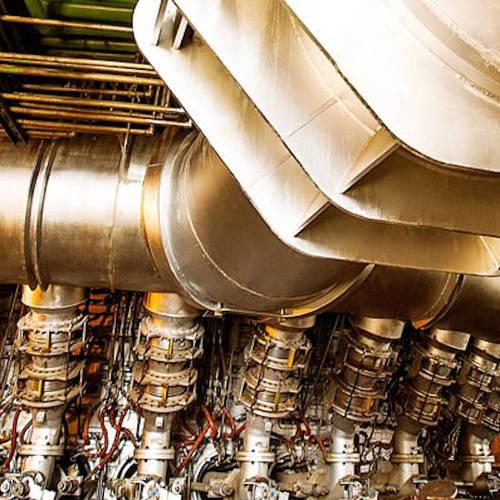
India’s largest blast furnace at Rourkela Steel Plant
Projecting company as a class apart
“The real estate and infrastructure businesses will both continue to grow, given the needs of India’s fast-growing economy, and the Tata group has the resources, skills and scale to make a significant impact,” said Tata Sons chairman N. Chandrasekaran. Tata Realty and Infrastructure (TRIL) is in the business of commercial real estate, and also houses the Infrastructure & Urban Solutions division, which is in the business of infrastructure concessions.
Foraying into new divisions such as oil & gas and metro projects where limited players are present, Tata Projects has emerged as a top highly diversified company,” points out Fitch credit rating agency India Ratings and Research, or Ind-Ra. The agency adds that though TPL’s customer concentration remains high, with the top 10 customers accounting for 50 to 55 per cent of the unexecuted order book at end-March, around 90 per cent of the order book is from government bodies where the default risk is minimal.
Noting that the Covid-19-led lockdown has rendered order execution by EPC companies uncertain, Ind-Ra has learnt from TPL that it is striving to improve its financial health through measures like assessing contractual rights and obligations, seeking extended timelines from customers, focusing on reducing fixed costs, streamlining the supply chain, and re-engineering its operations to achieve required efficiencies. Ind-Ra nevertheless indicates, “Any weakening of the linkages with the Tata Group could also result in a negative rating action.”
Chaturvedi is, however, encouraged by the fact that the government’s Atmanirbhar Bharat (self-reliant India) initiative has recognised infrastructure as one of the five pillars, in an acknowledgement of the sector’s key role in India’s development and large-scale employment generation. He adds: “The extension of up to six months to be given by government agencies is a welcome move, since many projects across the nation were affected due to the sudden disruption caused by the pandemic – much of this such as lockdown was beyond the control of contractors.”
Deshpande maintains, “India requires many strong construction companies, and our intent is to set Tata Projects as a class apart in being a smart engineering and construction company that is technology-driven, highly innovative, and one that pursues an altogether fresh way of doing business”.
